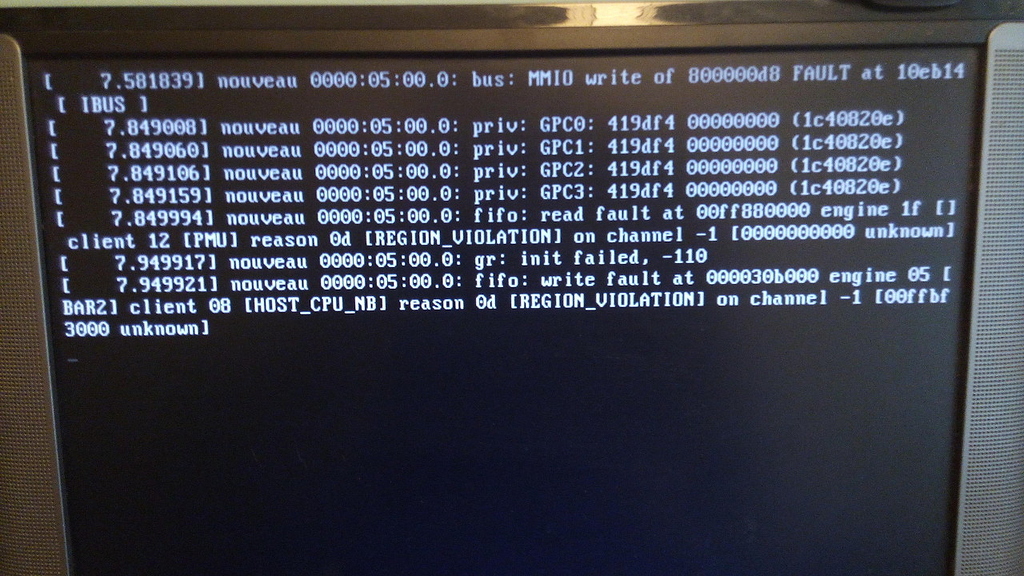
- #Check graphics card ubuntu command line install
- #Check graphics card ubuntu command line drivers
- #Check graphics card ubuntu command line update
- #Check graphics card ubuntu command line driver
- #Check graphics card ubuntu command line free
WARNING: apt does not have a stable CLI interface yet. To make sure, use apt to find the latest version.Īpt show xserver-xorg-video-radeon | grep -i version
#Check graphics card ubuntu command line update
This command found 2 installed packages, looks like the first one has an update available, the 2nd one doesn't say, suggesting it's up-to-date. Xserver-xorg-video-radeon/trusty-updates,now 1:7.3.0-1ubuntu3.1 amd64 Use a wild-card (*) before and after to get everything and anything containing the word radeon. Use apt to search for an installed package containing the name 'radeon'.
#Check graphics card ubuntu command line driver
The output of the previous command told us the driver is called 'radeon', but the package name may be quite different. You need to know the name of the Ubuntu package. Which Version of the Driver Am I Running? Is It the Latest?įirst, which version of the driver are you running. Here we have the RV770 GPU and running the radeon (open source) driver. Resources: irq:41 memory:d0000000-dfffffff memory:fdce0000-fdceffff ioport:dc00(size=256) memory:fdcc0000-fdcdffffĭriver support for ATI chips is listed by GPU code, not my graphcis card model number. Ĭapabilities: pm pciexpress msi vga_controller bus_master cap_list rom Run this command as sudo, you get more complete output. This is useful when you suspect your old card may no longer be supported, or you're simply not sure which specific variant of a graphics card you have, or you're not sure which driver you are running (open source or proprietary?).

OpenGL renderer string: Gallium 0.4 on AMD RV770Ĭheck Graphics Card ID and Installed Driver If something gets messed up, like your old card no longer being supported by the current driver, it will usually show here first.

#Check graphics card ubuntu command line free
Feel free to leave a comment or feedback.Here's a few useful commands and what they do: Whether you are using popular GPU driver brands like Intel, Nvidia, or AMD, the discussed Linux commands should suffice. The -c denotes the class of hardware we are interested in in this case video. To list the specs associated with the video card or graphics card we are using, implement the following command as a sudoer/root user: $ sudo lshw -c video In the following example the Intel card is active while the nVidia. Any controller with VGA controller at the end is your currently active GPU.

The lshw (list hardware) utility comes pre-installed on major Linux operating system distributions. To check which GPU is currently in command (that means which is an active VGA controller) type in. With the lshw command, you will be able to retrieve system specifications associated with the hardware components that make up your computer system. The glxinfo command is piped to a grep command that retrieves the vendor, device, and version info associated with the graphics card hardware present on your computer system. $ glxinfo | grep -iE 'vendor:|device:|version:'

Once installed, you can run the following command to get your current graphics card info.
#Check graphics card ubuntu command line install
To use the glxinfo utility, we will need to install the mesa-utils package associated with it. Since glxinfo tool is not pre-installed on all major Linux distributions, reference the following installation for those specific Linux distributions. It can help us retrieve your current graphics card info together with the graphics API specifications info. The glxinfo tool provides mesa driver display info (OpenGL specification open-source implementation). The output from my end reveals that my computer system is using an Intel GPU with i915 as its driver in use.
#Check graphics card ubuntu command line drivers


 0 kommentar(er)
0 kommentar(er)
